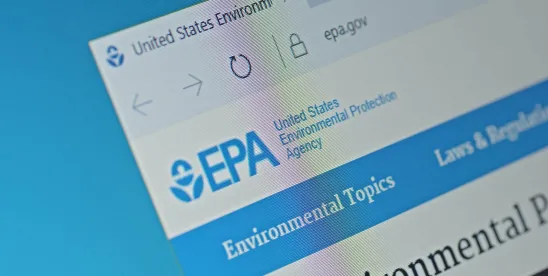On April 23, 2024, EPA issued a press release describing how a final rule issued under the Toxic Substances Control Act (TSCA) will ‘strengthen’ EPA’s process for conducting risk evaluations on chemicals and better protect workers and communities from toxic chemical exposures.
Many of the changes included in the final rule were proposed in 2021, and EPA has incorporated these changes into TSCA risk evaluation activities over the past three years. EPA proposed a revised procedural framework rule in October 2023. This final rule sets out procedures contained in the framework and applies to all risk evaluations initiated 30 days after the date of publication of the final rule or later. For risk evaluations that are currently in process, EPA expects to apply the new procedures to those risk evaluations to the extent practicable, taking into consideration the statutory requirements and deadlines.
Overview of Key Features of Final Rule
The rule includes revisions made to respond to a court ruling and several changes to improve EPA's process for TSCA risk evaluations. These include:
- Consideration of real-world exposure scenarios, including multiple exposure pathways and combined risks from multiple chemicals;
- A requirement that risk evaluations are comprehensive in scope and do not exclude conditions of use or exposure pathways;
- Clarifications to ensure EPA appropriately considers risks to all workers in its risk evaluations;
- Consideration of chemical uses required for national security or critical infrastructure;
- Assurance that the agency will continue to use the best available science to conduct risk evaluations and that risk evaluations will be peer-reviewed;
- A clear requirement for risk evaluations to culminate in a single risk determination on the chemical substance, rather than on individual chemical conditions of use in isolation;
- New procedures and criteria for revising scope and risk evaluation documents to improve transparency; and
- A requirement that risk evaluations must explicitly consider overburdened communities when identifying potentially exposed and susceptible populations.
Significant revisions were made to improve TSCA risk evaluations, including:
- The TSCA process now includes real-world exposure scenarios and combined risks from multiple chemicals;
- Risk evaluations are now comprehensive in scope and consider all workers and vulnerable populations; and
- EPA will continue to use the best available science and all risk evaluations will be peer-reviewed.
Importantly, the final rule includes enhanced environmental protection for overburdened communities. The final rule explicitly requires EPA to consider overburdened communities when identifying potentially exposed and susceptible populations in risk evaluations. This provision addresses environmental justice concerns and aligns with the Biden Administration's agenda to protect vulnerable communities from pollution.
The final rule considers cost and complexity, in the context of varying types and levels of analysis in risk evaluations, depending on the specific chemical and the potential risks. This is called a “fit-for-purpose” approach to risk evaluations. This approach enables EPA to focus resources on conditions of use that pose the greatest potential risk while streamlining the evaluation process for low-risk scenarios.
Industry comments to the October 2023 ‘framework’ rule indicate likely court challenges to the final rule. Grounds identified to challenge the final rule include:
- Portions of EPA’s proposal contradict the statutory language;
- The final rule would adopt policies and procedures antithetical to a full risk evaluation and convert a streamlined risk management rulemaking into a massive review of all applications for each chemical substance;
- The final rule proposes to find that all conditions of use as unsafe if any single use of a substance is unsafe and defer all safety determinations until completing the risk management rulemaking process; and
- The final rule will effectively repeal a statutory preemption provision.
For affected stakeholders- chemical manufacturers and industrial operators reliant on chemicals subject to these risk evaluations- the final rule has implications for greatly added expense, extensive time delays and limitations on uses. Some operators may be drastically constrained and need to scramble to identify and integrate alternative or substitute chemicals in their processes.





 />i
/>i
